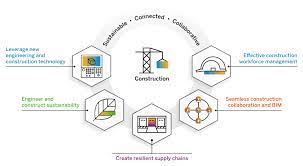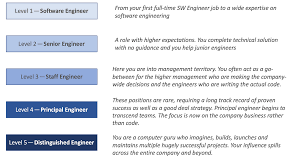The Quest for the Best Software Engineer: Unveiling the Top Qualities
The Qualities of the Best Software Engineer
Software engineering is a challenging and dynamic field that requires a unique set of skills and qualities to excel. The best software engineers possess a combination of technical expertise, problem-solving abilities, creativity, and strong communication skills.
Technical Expertise
A top software engineer is proficient in multiple programming languages and technologies. They have a deep understanding of algorithms, data structures, and software design principles. Their knowledge allows them to develop efficient and scalable solutions to complex problems.
Problem-Solving Skills
The best software engineers are adept problem solvers. They can analyze issues, identify root causes, and develop innovative solutions. They approach challenges with a logical mindset and are persistent in finding the most effective way to overcome obstacles.
Creativity
Creativity is essential for software engineers to think outside the box and come up with innovative solutions. The best software engineers can envision new possibilities and implement novel approaches to address problems creatively.
Communication Skills
Effective communication is crucial for software engineers to collaborate with team members, understand requirements, and explain technical concepts to non-technical stakeholders. The best software engineers can clearly articulate their ideas, listen actively, and work well in a team environment.
Continuous Learning
Software engineering is a rapidly evolving field with new technologies emerging regularly. The best software engineers are committed to continuous learning and professional development. They stay updated on industry trends, attend workshops or conferences, and seek out opportunities to expand their knowledge base.
In conclusion, the best software engineer possesses a diverse skill set that includes technical expertise, problem-solving abilities, creativity, strong communication skills, and a commitment to lifelong learning. By embodying these qualities, top software engineers drive innovation, deliver high-quality solutions, and contribute significantly to the success of their teams and organizations.
7 Key Questions About Excelling as a Top Software Engineer
- What skills are essential for a software engineer to be considered the best?
- How important is technical expertise for a top software engineer?
- What problem-solving abilities should the best software engineers possess?
- Why is creativity an important quality in a software engineer?
- What role do communication skills play in being a successful software engineer?
- Why is continuous learning crucial for software engineers to excel in their field?
- How can software engineers stay updated on the latest industry trends and technologies?
What skills are essential for a software engineer to be considered the best?
To be considered the best software engineer, a combination of essential skills is required. Firstly, technical expertise in multiple programming languages, algorithms, and software design principles is crucial for developing efficient and scalable solutions. Problem-solving skills are essential to analyze complex issues and devise innovative solutions. Creativity plays a key role in thinking outside the box and approaching challenges with fresh perspectives. Strong communication skills are necessary for effective collaboration with team members and conveying technical concepts to non-technical stakeholders. Additionally, a commitment to continuous learning and staying updated on industry trends ensures that a software engineer remains at the forefront of innovation in this rapidly evolving field.
How important is technical expertise for a top software engineer?
Technical expertise is paramount for a top software engineer as it serves as the foundation for their ability to design and develop robust solutions. Proficiency in various programming languages, algorithms, and software design principles enables them to tackle complex problems effectively and efficiently. A deep understanding of technical concepts allows top software engineers to create scalable and high-performing software systems. While other skills like problem-solving, creativity, and communication are valuable, technical expertise remains a fundamental requirement for a software engineer to excel in their role and deliver innovative solutions that meet the demands of modern technology landscapes.
What problem-solving abilities should the best software engineers possess?
When it comes to problem-solving abilities, the best software engineers should exhibit a strong analytical mindset and the ability to break down complex issues into manageable components. They should be adept at identifying patterns, recognizing dependencies, and formulating effective strategies to tackle challenges efficiently. Additionally, top software engineers demonstrate creativity in exploring multiple solutions, evaluating trade-offs, and selecting the most optimal approach based on technical feasibility and business requirements. Their problem-solving skills also involve a keen attention to detail, thorough testing methodologies, and a commitment to refining solutions iteratively to achieve the best possible outcomes.
Why is creativity an important quality in a software engineer?
Creativity is an essential quality in a software engineer because it enables them to approach problems from unique perspectives and develop innovative solutions. In the fast-paced and ever-evolving field of software engineering, creativity allows engineers to think outside the box, explore new possibilities, and come up with unconventional approaches to complex challenges. Creative software engineers can envision creative solutions that not only meet the technical requirements but also exceed expectations by delivering elegant and efficient solutions. By leveraging their creativity, software engineers can drive innovation, improve user experiences, and differentiate themselves in a competitive industry.
What role do communication skills play in being a successful software engineer?
Effective communication skills play a crucial role in the success of a software engineer. Beyond writing code, software engineers must be able to articulate their ideas, collaborate with team members, and communicate technical concepts to non-technical stakeholders. Clear communication ensures that requirements are understood correctly, issues are addressed promptly, and solutions are implemented effectively. Strong communication skills also foster teamwork, enhance problem-solving abilities, and contribute to a positive work environment. In today’s collaborative and fast-paced tech industry, being a successful software engineer requires not only technical expertise but also the ability to communicate effectively across various levels of an organization.
Why is continuous learning crucial for software engineers to excel in their field?
Continuous learning is crucial for software engineers to excel in their field because the tech industry is constantly evolving with new advancements and innovations. By staying updated on the latest technologies, tools, and best practices, software engineers can enhance their skills, adapt to changing trends, and remain competitive in the job market. Continuous learning also fosters creativity, problem-solving abilities, and a growth mindset, enabling engineers to tackle complex challenges with confidence and develop innovative solutions. Embracing lifelong learning empowers software engineers to stay ahead of the curve, deliver high-quality work, and drive progress in the ever-changing landscape of technology.
How can software engineers stay updated on the latest industry trends and technologies?
Staying updated on the latest industry trends and technologies is crucial for software engineers to remain competitive and relevant in the ever-evolving field of technology. To stay current, software engineers can engage in various practices such as attending industry conferences, participating in online webinars, joining professional networking groups, following tech blogs and podcasts, enrolling in online courses or certifications, reading industry publications, and actively engaging with the developer community through forums and social media platforms. By continuously seeking out opportunities for learning and growth, software engineers can ensure that they are equipped with the knowledge and skills needed to adapt to new technologies and trends in the fast-paced world of software development.












